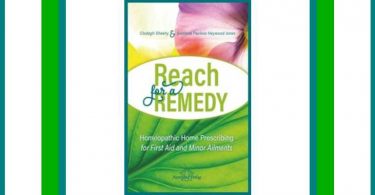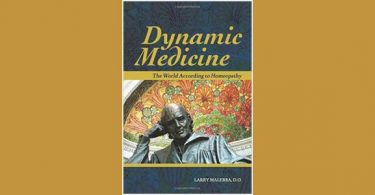Title: The System of Homeopathy
Author: Dr. Rajan Sankaran, MD.
Published by: Homeopathic Medical Publishers, Mumbai, India.
Year: First Edition, 2000.
Pages: 494 with index, hardcover

In the prior reviews of Dr. Rajan Sankaran’s three books that I wrote for you, you have learned about the spirit and substance of Homeopathy, and the soul of the remedies. You have become familiar with Dr. Sankaran’s take on miasms, both old and new, and also learned to look at the good old Organon with a fresh eye. All of these constitute a steep learning curve, but as you read this review of Dr. Sankaran’s fourth book, the System of Homeopathy, you will see that learning can be an ongoing endeavor.
While releasing one book after the other, Dr. Sankaran was globe-trotting, teaching in every continent (except perhaps Antarctica), presenting live-cases to make his point, and using video recordings as teaching tools. Homeopaths from all over the world became quite hungry for the scrumptious crumbs from his practice.
So, what does he do? He writes yet another book, number 4 in this review series, the System of Homeopathy, so that his students from around the world can actually understand how he takes a case, what he does with the information thus gained, how he arrives at a remedy, a miasm, and how do his patients do on his remedies?
When you get to the book, the System of Homeopathy, I insist that you read the first chapter, Evolution of the System, with all your attention, meaning, your cell phone is actually turned off. Then you will see how the twists, turns, steps, practical experience with the remedies and patients, proving information and some real deep thinking propelled Dr. Sankaran on a path that was now opening up in front of him and the homeopaths from the world over were curious about walking a few miles with him on this unique and ground-breaking journey in Homeopathy.
The bullet points below summarize the growth in Dr. Sankaran’s understanding of Homeopathy so that he could streamline his case taking and condense his wisdom into the book 4, the System of Homeopathy:
- Mechanical listing and repertorization of cases lead to success sometimes and failure sometimes
- Successful cases receive a prescription based on mental and general symptoms
- Potentized remedies can elicit a dynamic effect only
- Disturbance of the general and mental plane are called the central disturbance
- When central disturbance is removed, the peripheral symptoms cease to exist, meaning, with Homeopathy, we are to treat the central disturbance
- The state of disposition of the patient determines the selection of the remedy, and the disposition of the patient is noticed way before we notice the general symptoms
- Mental state is different from a listing of mental symptoms
- Remedies have a characteristic combination of components
- Each remedy presents a particular situation
- Each patient comes from a particular situation in his past in which the components of his present state were required
- Disease is a survival mechanism in a particular situation, or a disease is a posture adopted by the organism for survival in a particular situation
- Adopted postures could be appropriate or inappropriate. Postures come in response to a situation and remain so long as a situation exists. This posture is appropriate and need not be treated. When the posture is inappropriate for a situation and exists even without the necessary situation, it is a disease and needs to be treated
- Diseases have roots that are passed down from one generation to the next as impressions parents carry at the time of conception
- A patient may have one or several roots of his disease state. At a moment in time, only one root is predominant, while the other roots are silent. When roots are excited, they manifest as specific states of disease.
- Delusion is false perception of reality. Disease, an out of proportion and out of place response to a situation that does not exist at present, is also a delusion.
- Awareness of reality is the cure, and health equals freedom.
- Compensation is a willful covering up of some elements of our nature
- Dreams reveal uncompensated feelings and are a key to understanding the delusion (disease) of the patient
- Remedies of a specific kingdom have a core issue, plant kingdom revolves around sensitivity, animal kingdom is about competition and survival, and the mineral kingdoms is about structure, relationships and performance
- Each patient is a state of being. Each remedy is a state of being and it is connected to the source of the remedy.
- Patient can be in any one of the four stages that are indicative of an increase in the intensity of delusion. Stage 1 is uncompensated state of the main feeling, stage 2 is about coping mechanism, as the intensity of delusion is increasing, the patient is trying to cope. The 3 stage is the failed stage, the person is unable to cope because delusion is very intense. In the stage 4, or the final stage, the patient gives up coping
- Hahnemann classified diseases into three miasms, syphilitic (destruction), sycotic (fixed ideas) and psoric (cheerfulness and optimism). On considering miasms as pace of action, several other miasms can be added to the existing three: acute, typhoid (subacute), tubercular, ringworm, malarial, cancer and leprosy.
Essentially, the system of case taking and solving, as practiced and taught by Dr. Sankaran is based on all of the above findings. Mix-ups can arise splendidly when expressions of kingdom are confused, miasm is not determined with certainly, and there is no idea about the true uncompensated feeling in the case.
Dr. Sankaran experienced these problems in his own practice, just as many of his students did and so, he wrote this book, the System of Homeopathy, so we may be able to understand his approach a bit better and adopt it successfully.
The rest of the book, from page 9 till 445, are cases, 35 in all. The strengths of this section are:
- Cases are condensed and edited for clarity
- Foot notes are placed as necessary. In these footnotes, Dr Sankaran is teaching us what to pay attention to, what stands out, what we must become aware of as the case unfolds. In fact, these footnotes are his comments on what is most important in the case and in that regard, these are powerful learning tools that we can make use of.
- All information from the footnotes is taken into consideration during case analysis.
- Some cases have rubrics
- All cases have remedy choice, potency and follow up.
- In the comments section of the cases, Dr Sankaran points out the most important transformation experienced by the patient on the indicated remedy.
While reading these cases, I see the point why Dr. Sankaran chose to leave out a detailed materia medica description for the chosen remedies. But I would have absolutely loved to see a brief soul-sketch of the remedies that he has prescribed. This addition would have added much value to this already great book.
After reading all 35 cases, I felt so much better. Reading these cases with footnotes and comments by the author, is way better than watching case videos. Often the audio-video quality could be better, and I have seen Westerners developing a momentary ringworm miasm – they try heroically to understand, and then they give up for a while … you get the idea.
Now, we come to the appendix section and we get to read a brief summary of Dr. Sankaran’s miasms. This section is a repeat (or a refresher) from his earlier books, and the gist is: psora – struggle, syphilis – destruction, sycosis – fixed ideas, tubercular – change, typhoid critical but hopeful of recovery, malarial – feeling intermittent threat, cancer – super-human effort and prolonged struggle without end, leprosy – intense oppression and hopelessness, and finally ringworm – alternating between struggling and giving up.
For concluding this book, Dr. Bill Gray has written a summary centered around the idea that the teachings and system of Homeopathy, as proposed by Dr Rajan Sankaran, can be successfully learned and integrated into our own practice of Homeopathy. All that is left for us to do is try, and try again.
Happy reading.





